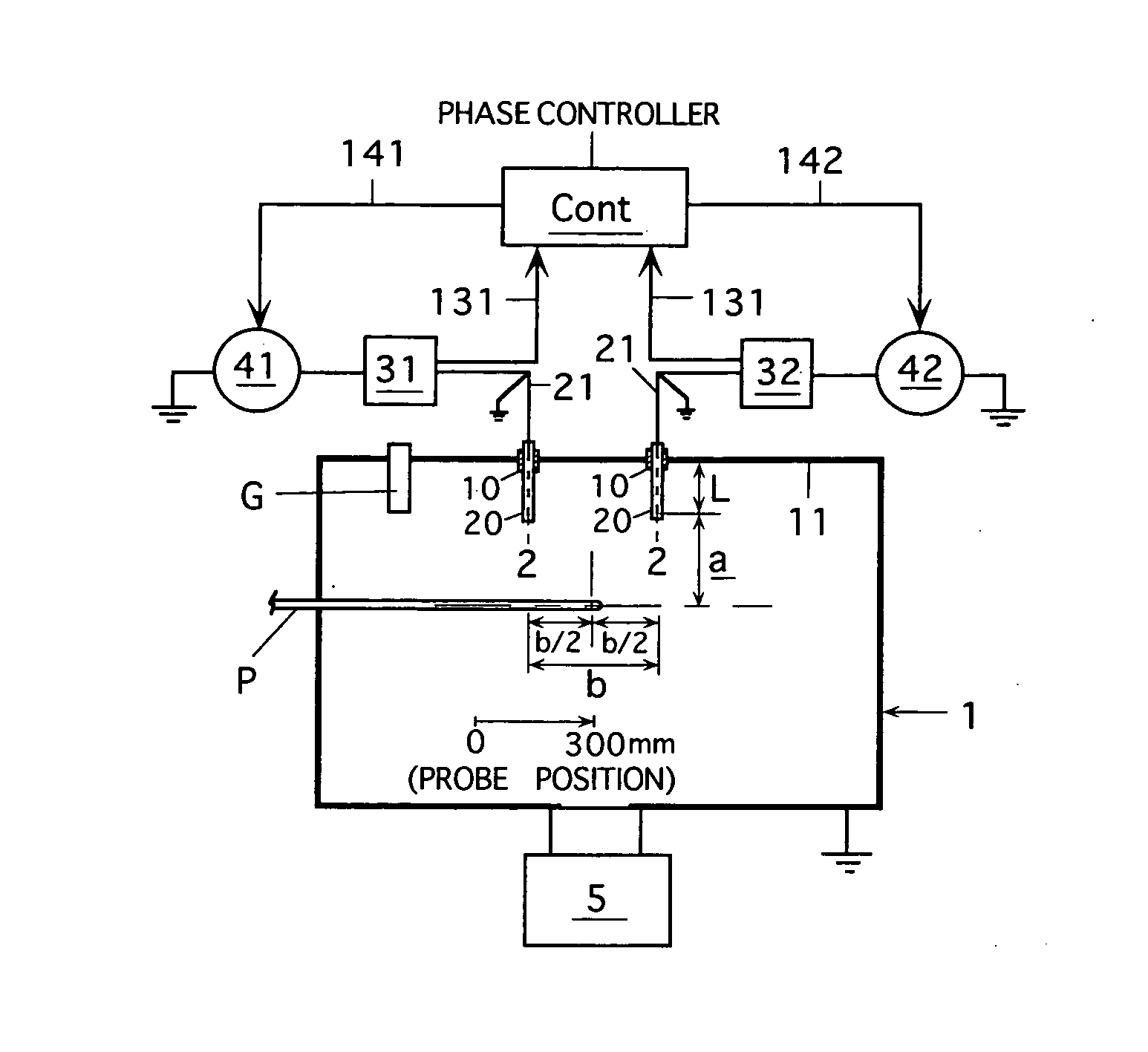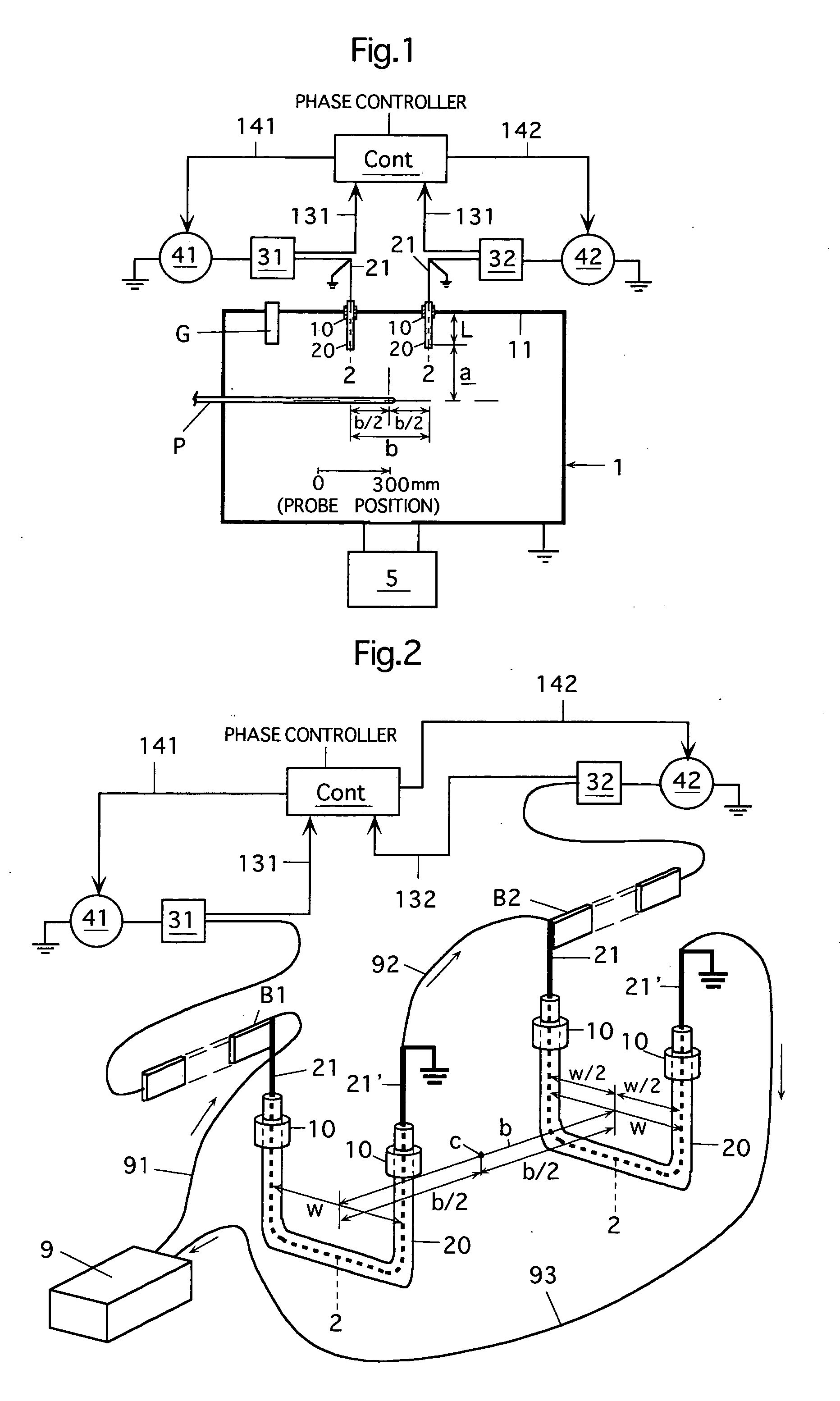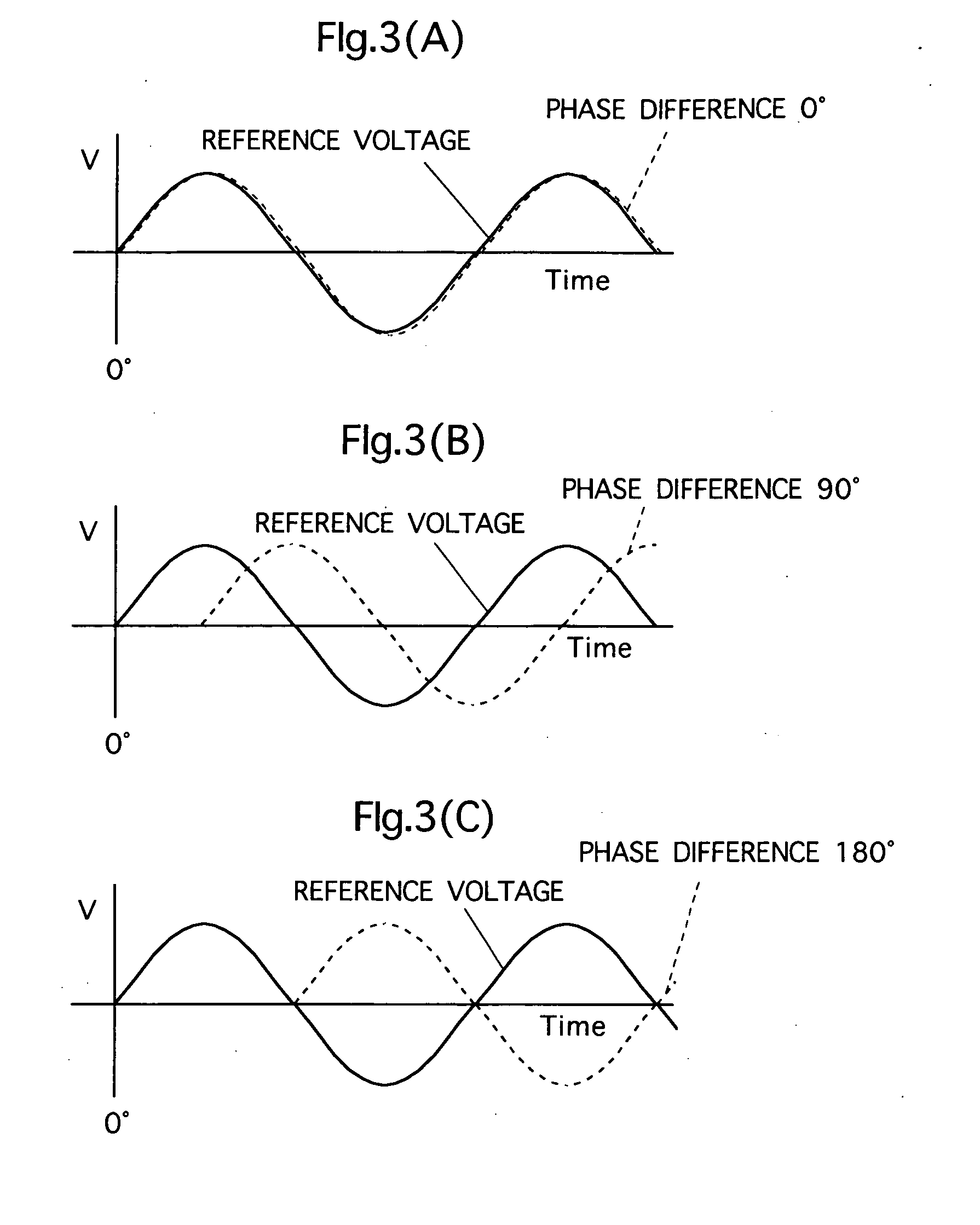Plasma producing method and apparatus as well as plasma processing apparatus
a plasma processing and plasma technology, applied in the direction of coatings, electric discharge lamps, electric lighting sources, etc., can solve problems such as defects, and achieve the effect of keeping a low electron temperature in the plasma more readily
- Summary
- Abstract
- Description
- Claims
- Application Information
AI Technical Summary
Benefits of technology
Problems solved by technology
Method used
Image
Examples
experimental example 1
[0091] (1) Plasma Generation Conditions
[0092] High-frequency Power: Power of 13.56 MHz and 1250 W was supplied to each of the two antennas.
[0093] Plasma Producing Pressure: 1.8 Pa
[0094] Kind and Amount of Supplied Gas: Hydrogen gas, 300 cc / minute
[0095] Initially, the plasma producing chamber was depressurized to the order of 10−5 Pa, then the hydrogen gas was supplied at 300 cc / minute and the chamber pressure was kept at 1.8 Pa.
[0096] (2) Antenna and Insulating Tube Conditions
[0097] Material of Each Antenna: A circular copper pipe having an outer diameter of ¼ inch (about 6.35 mm) and a wall thickness of 1 mm was bent into a U-shaped form. Cooling water could flow therethrough.
[0098] Horizontal Width w (see FIG. 2) of Each Antenna: 55 mm
Vertical Length of Each Antenna: 250 mm (Length L in the chamber 1=100 mm)
Distance b between the parallel opposed antennas: b=340 mm
Each Insulating Tube Covering Antenna: Quartz(silica) tube having an outer diameter of 16 mm and an inner d...
experimental example 2
[0107] (1) Plasma Generating Conditions
[0108] These are the same as the conditions in the experimental example 1.
[0109] (2) Antenna and Insulating Tube Conditions
[0110] These are the same as the conditions in the experimental example 1.
[0111] Under the above conditions, the inductively coupled plasma was produced with the phase differences of 0 degrees, 90 degrees and 180 degrees caused between the high-frequency voltages applied to the two antennas. In connection with each of the phase differences, the electron temperature (eV) and electron--density (pcs / cm3) were measured, and the plasma was evaluated. The measuring method and conditions were the same as those in the experimental example 1.
[0112]FIG. 7 illustrates a result of the measurement of the electron temperature (eV), and FIG. 8 illustrates a result of the measurement of the electron density.
[0113] As can be seen from FIGS. 7 and 8, the lowest electron temperature was attained when the phase difference was 0 degrees. ...
PUM
| Property | Measurement | Unit |
|---|---|---|
| Angle | aaaaa | aaaaa |
| Angle | aaaaa | aaaaa |
| Polarity | aaaaa | aaaaa |
Abstract
Description
Claims
Application Information
 Login to View More
Login to View More - R&D
- Intellectual Property
- Life Sciences
- Materials
- Tech Scout
- Unparalleled Data Quality
- Higher Quality Content
- 60% Fewer Hallucinations
Browse by: Latest US Patents, China's latest patents, Technical Efficacy Thesaurus, Application Domain, Technology Topic, Popular Technical Reports.
© 2025 PatSnap. All rights reserved.Legal|Privacy policy|Modern Slavery Act Transparency Statement|Sitemap|About US| Contact US: help@patsnap.com



